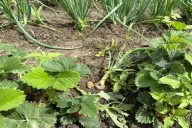10 mistakes when buying seeds: many gardeners themselves put an end to the future harvest
Even experienced gardeners are periodically forced to seek help and use other people's advice.
We will tell you how to avoid unplanned expenses, grow strong seedlings and gather a rich harvest. To do this, you just need to avoid the mistakes that are made when choosing and buying seeds.
1. Seeds in simple bags
Often gardeners are bribed by the picture on the seed packaging, while seeds of no worse quality can be packaged in ordinary paper envelopes to reduce the cost.
2. Economy and frugality
However, in pursuit of something cheaper than the average market price, you can buy something that will not sprout at all. Only a product whose price corresponds to the "golden mean" can justify the investment.
3. Picture on the packaging
Don't expect that you will grow exactly the same vegetables or berries. Marketers are not asleep and the drawn carrots will most likely differ from those that grow in the garden. Before buying, you need to study the reviews of the seed producer and the stores that sell such products.

4. Seeds-pellets
This is the latest development, designed to make gardeners' work easier. But gardeners, like hundreds of years ago, shy away from progress and complicate their own lives.
5. Climate and variety
In addition to the variety, there is the concept of "climatic features". You need to choose what breeders have developed for growing in northern or southern conditions. But do not expect that "northern" seeds will give amazing results in the south.
6. Buy wherever you can
Marketers know what percentage of purchases are made spontaneously, and they take advantage of this. Therefore, if you notice a woman with seeds in a passageway or at a market, do not rush to get out your wallet, but think about the conditions in which she stored the seeds and whether you need them right now.
7. Buying in bulk
Not the best option. If nothing happens to the stock of salt, matches and soap, then the seeds have a shelf life, which affects germination. It is not a fact that, having lain for a year or two at the bottom of the box, they will hatch at all.
8. Hybrids
Seeds with the F1 sign are hybrids, not GMOs, as many believe. They grow into quite normal vegetables. But using seeds from grown vegetables is useless. They no longer carry the parent genes and will turn out unsightly.
9. Manufacturer's information
After looking at the picture, many grab the seeds without reading what the manufacturer has indicated on the back. But that is where the most important information is, and it may be written that in your case it is better not to buy this variety.
10. Date of production
The expiration date, production date and other information about the dates are applied to the bags by imprinting a date stamp. The ink should be the same color, the numbers the same size. If you notice a difference, put it aside, most likely it is an expired product.
